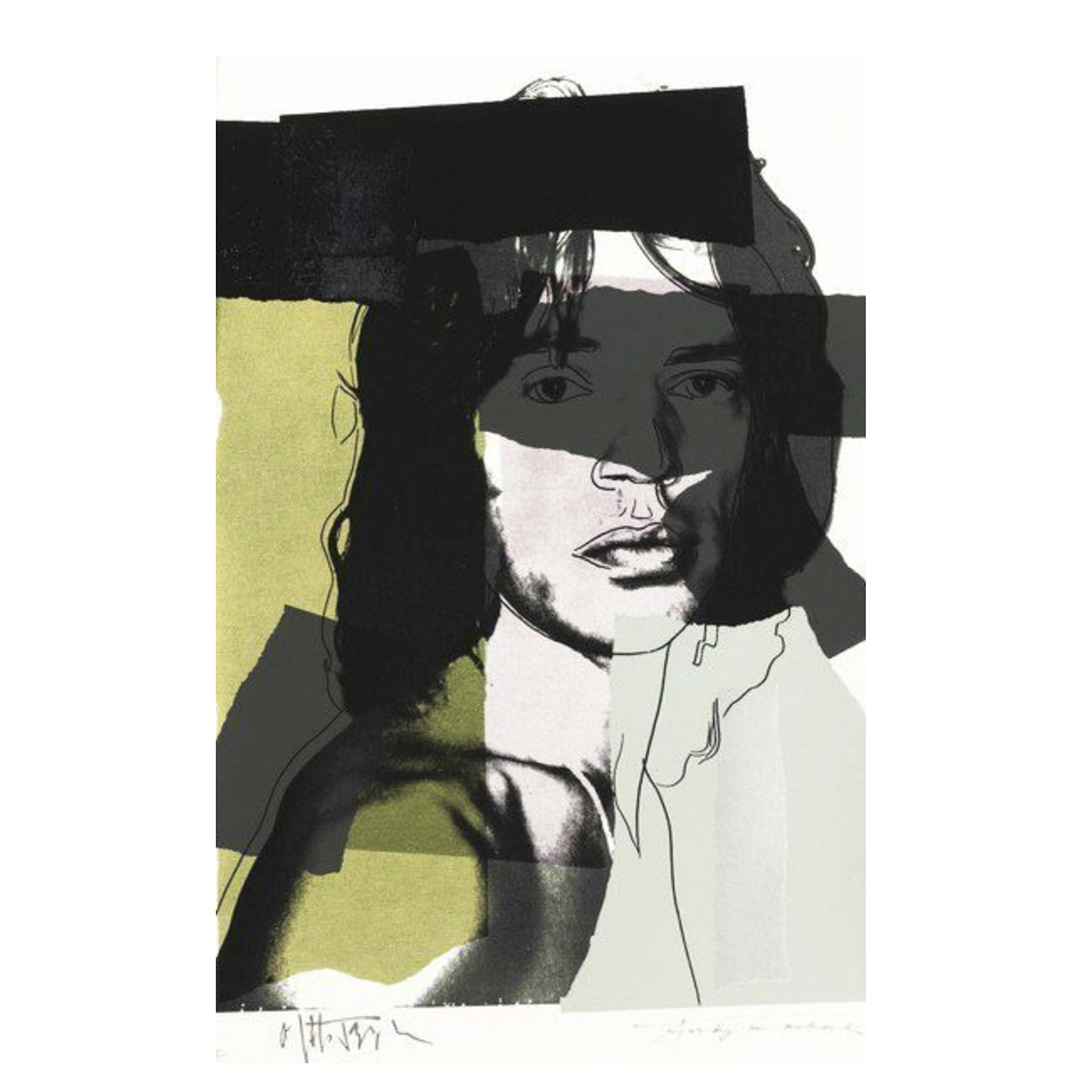The Day I Met Mick Jagger
Ok, so it wasn’t exactly the live human, British rock star and lead singer of the Rolling Stones. I’m not even sure of the date. My best guess is that it was sometime in the summer of 1980 when our regular UPS delivery guy walked into the studio with a package for my friend and co-worker, Corbett Reynolds. Corbett had purchased an original screen print of Mick Jagger by Andy Warhol from the series that was produced in 1975. It was the image of Jagger with a patch of black color across his eyes and the first time I’d seen a Warhol artwork in person. I think Corbett paid something like $1200 for it.
The UPS guy always came in the afternoon, and each time he would take a little break from his delivery route, hanging around for five to ten minutes. Corbett had a habit of gently teasing people to get them to engage with him and, over time, had developed a friendly banter with our UPS guy. So he stayed to watch Corbett open the package and pin Jagger up on the display board. The UPS guy’s first reaction to the art was to exclaim, “my young daughter could do that!” Corbett said that was great, told him how much it cost and that his daughter could make lots of money!
Mick hung around the studio long enough for us to be on a first name basis. I got to know Mick really well. I saw exactly how he was made and that Warhol’s technique was really quite simple. While the UPS guy’s daughter couldn’t actually make art like this, I realized I could, technically speaking. I could have easily reproduced Mick’s image with the skills and techniques I used every day on the job in that screen print studio. Warhol was suddenly demystified and a world of possibilities opened up for me. As much as I loved Warhol and felt his influence, knowing his technique allowed me to start developing my own style. Much of my early artwork was intentionally done in Warhol’s style; but with each piece, a little more of me began to appear.
I think, at some time in every artist’s career, they are asked about their artistic influences. Another artist I loved was Robert Rauschenberg—not the early combines but rather his mid-career photo-silkscreen work. I saw influences of his style in some of my commercial projects through the years. April Greiman was the biggest influence on my graphic design career. She embraced the computer as a design tool and created a “hybrid imagery” that fused typography and digitization with layers of art within her graphic designs. She certainly was one of the first to embrace technical errors in her work, and I feel her even now in my current artwork.
Without a doubt, Corbett Reynolds had the greatest impact on my artistic development though not technically; he was primarily a sculptor and performance artist. But I understood his sensibilities, shared his wallcovering and interior design style and loved working with him. Corbett started out as a mentor and became a close friend who embraced me as an equal collaborator. He gave me the gift of self-belief.
Eventually, Mick moved in with Corbett at his stately Victorian home. Whenever I visited there, I’d stop by to see Mick, all dolled up in his stylish frame and hanging on the wall in the parlor that was painted totally black, across from the California drop cloth style sofa. Despite the stunning interior design he was resplendent and owned the room.
Mick Jagger by Andy Warhol, 1975

